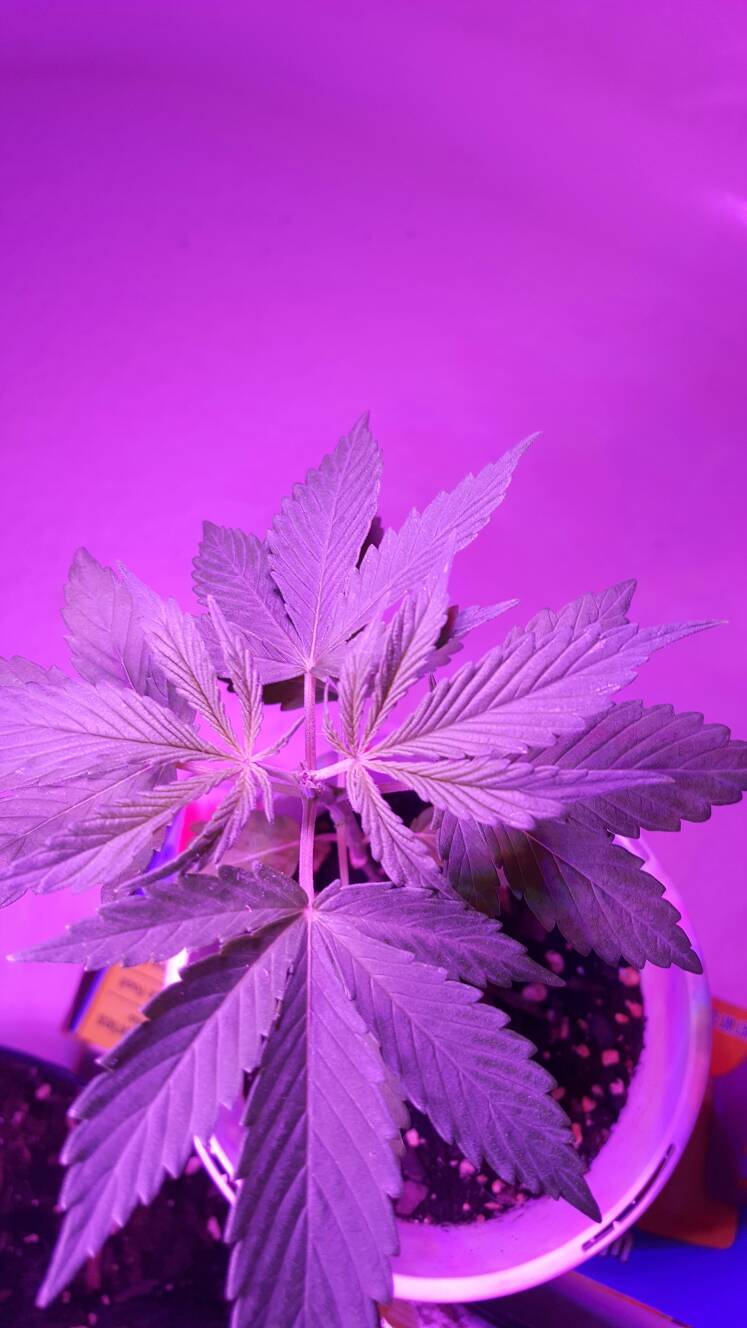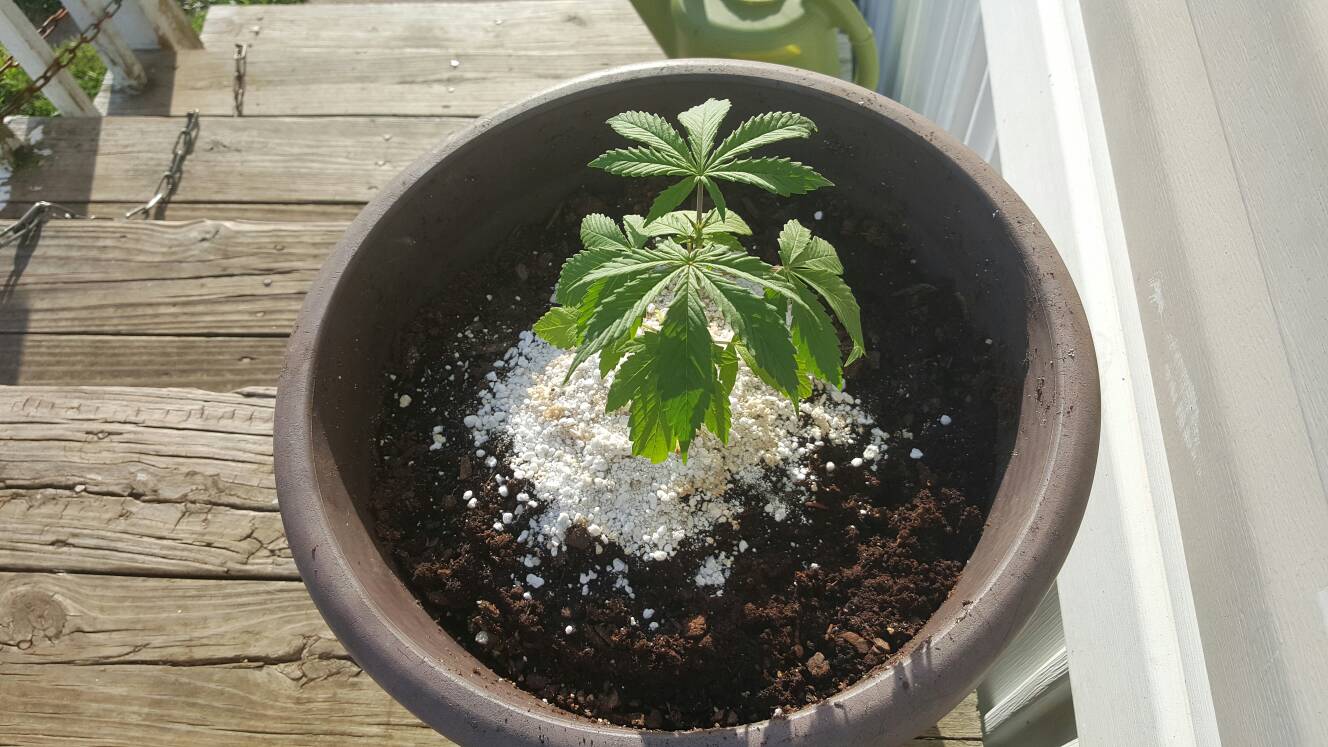That soil blend says "not recommended for container gardening". Not sure why. It has all the usual suspects. Wood products aren't bad if fully composted. Many fungi are beneficial - like myco.
This is my method for the up-can:
Let the current pot dry out. If you use a clay pot, let it soak in water so it doesn't pull water from the soil immediately. Fill it with soil. Use current pot to measure a hole in the new pot to get the size correct. Once current pot is dry, knock the plant out. Look at the roots. If it holds together well and you see good root development all across the bottom any up the sides, it is ready for a new home. If not, put it back and water it well. Assuming it is ready to transplant, score the roots vertically in a few places around the sides with a utility or other sharp knife to loosen them up slightly. Drop it in the hole you created in the new pot and completely drench it to water it in.
I wouldn't top or supercrop the same day you transplant. You could but you're giving her a little damage both top and bottom. For a supercrop you can bend at more than 45 degrees - even more than 90 degrees. It will be pointing back up before you know it. The important thing is to do it gently and slowly after the stem has been lightly crushed. If you do it too fast, it can break. All that means is you topped it when or where you didn't intend to.
This is my method for the up-can:
Let the current pot dry out. If you use a clay pot, let it soak in water so it doesn't pull water from the soil immediately. Fill it with soil. Use current pot to measure a hole in the new pot to get the size correct. Once current pot is dry, knock the plant out. Look at the roots. If it holds together well and you see good root development all across the bottom any up the sides, it is ready for a new home. If not, put it back and water it well. Assuming it is ready to transplant, score the roots vertically in a few places around the sides with a utility or other sharp knife to loosen them up slightly. Drop it in the hole you created in the new pot and completely drench it to water it in.
I wouldn't top or supercrop the same day you transplant. You could but you're giving her a little damage both top and bottom. For a supercrop you can bend at more than 45 degrees - even more than 90 degrees. It will be pointing back up before you know it. The important thing is to do it gently and slowly after the stem has been lightly crushed. If you do it too fast, it can break. All that means is you topped it when or where you didn't intend to.



 these guys here at 420 rock. I understand that when you are researching on different growing styles, and techniques it can not only be confusing but many times there are differences of opinion from site to site and fro grower to grower, but as far as the wet/dry cycle for MJ is concerned, anyone who has any experience actually growing it, will tell you just how important it is.
these guys here at 420 rock. I understand that when you are researching on different growing styles, and techniques it can not only be confusing but many times there are differences of opinion from site to site and fro grower to grower, but as far as the wet/dry cycle for MJ is concerned, anyone who has any experience actually growing it, will tell you just how important it is.





